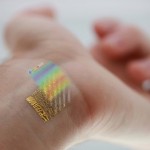
Remember the Cray XK6 at the University of Illinois that drives the National Science Foundation's Blue Waters project? Well, it looks like it's getting a little memory upgrade, sorta. We're not talking a slick new SSD here, or even a sweet NAS, all that computational power requires nothing less than... tape. Okay, so it's actually a full storage infrastructure, and some of it -- 25 petabytes no less -- will be disk-based. The rest -- a not insignificant 380 petabytes -- will be the good old magnetic stuff. The idea is that the disk part will be used for instant access, with the tape section serving as "nearline" storage -- something between an archive and online solution. Spectra Logic is providing the tape, and says it'll take a couple of years to implement the whole lot. Once complete, the system will support the supercomputer's lofty tasks, such as understanding how the cosmos evolved after the Big Bang and, y'know designing new materials at the atomic level. And we thought we were excited about out next desktop.
Supercomputer gets a memory boost with 380 petabytes of magnetic tape originally appeared on Engadget on Fri, 25 May 2012 13:17:00 EDT. Please see our terms for use of feeds.
Permalink  Ars Technica
Ars Technica | |
Email this |
Comments
 In may of 2011, a sequence of tornadoes roared across the midwestern United States. The incident became a focal point for scientists eager to learn what it is about supercell storms that allow them to form such devastating tornados. It's an important...
In may of 2011, a sequence of tornadoes roared across the midwestern United States. The incident became a focal point for scientists eager to learn what it is about supercell storms that allow them to form such devastating tornados. It's an important...
 In may of 2011, a sequence of tornadoes roared across the midwestern United States. The incident became a focal point for scientists eager to learn what it is about supercell storms that allow them to form such devastating tornados. It's an important...
In may of 2011, a sequence of tornadoes roared across the midwestern United States. The incident became a focal point for scientists eager to learn what it is about supercell storms that allow them to form such devastating tornados. It's an important...


 Measuring skin temperature very accurately could provide medical care providers a different perspective on the health state of a patient. …
Measuring skin temperature very accurately could provide medical care providers a different perspective on the health state of a patient. …





